Nothing puts a damper on a backyard barbecue like bugs. Whether it’s a mosquito buzzing around or ants getting into the food, these pests are exactly that. Fortunately, you can rely on a dependable plant to repel many of these critters. That’s right, citronella is a fantastic option to keep insects at bay. They hate the smell and you can use this to boost the impact of citronella during your next outdoor adventure.
The strong smell of citronella comes from the leaves and stems of this plant. It is closely related to lemongrass and has a similar citrusy scent. It’s quite nice, according to many people, although it can be a bit strong for some. Insects like mosquitos and flies, however, can’t stand it. The smell keeps them away from the environment.
#1 Mosquitos
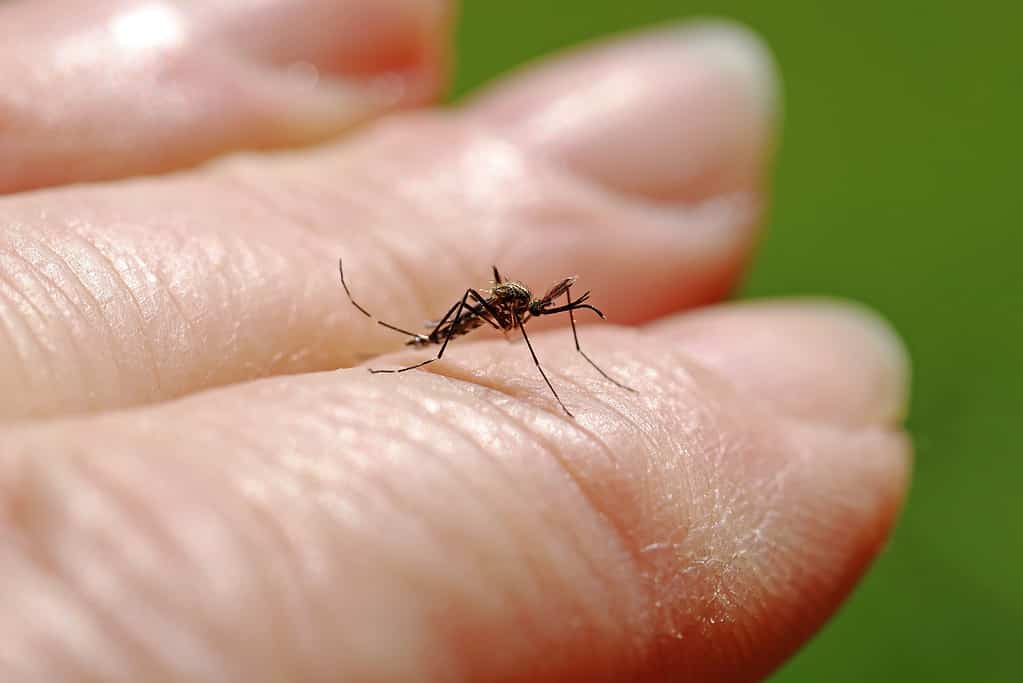
Mosquitos are a food source for birds, but when they bite humans, some types can cause malaria, Zika, and other deadly diseases.
©Astrid860/ via Getty Images
Mosquitos are some of the most annoying pests when you spend time outdoors. If it seems like they actively look for humans to bite, it’s because they do. Citronella works by masking the smells that mosquitos like that attract them to humans. They also block the receptors on mosquito antennae that they use to detect tasty smells.
Other plants with strong odors work similarly. These include catnip, lavender, and even basil. But citronella has one of the strongest smells and mosquitos are sensitive to it. The important thing to remember is that citronella is effective through its smell. So if the oil that you apply or the candle that you burn starts to be less intense, it won’t be as effective against mosquitos either. You might need to reapply periodically to get the benefits.
#2 House Flies
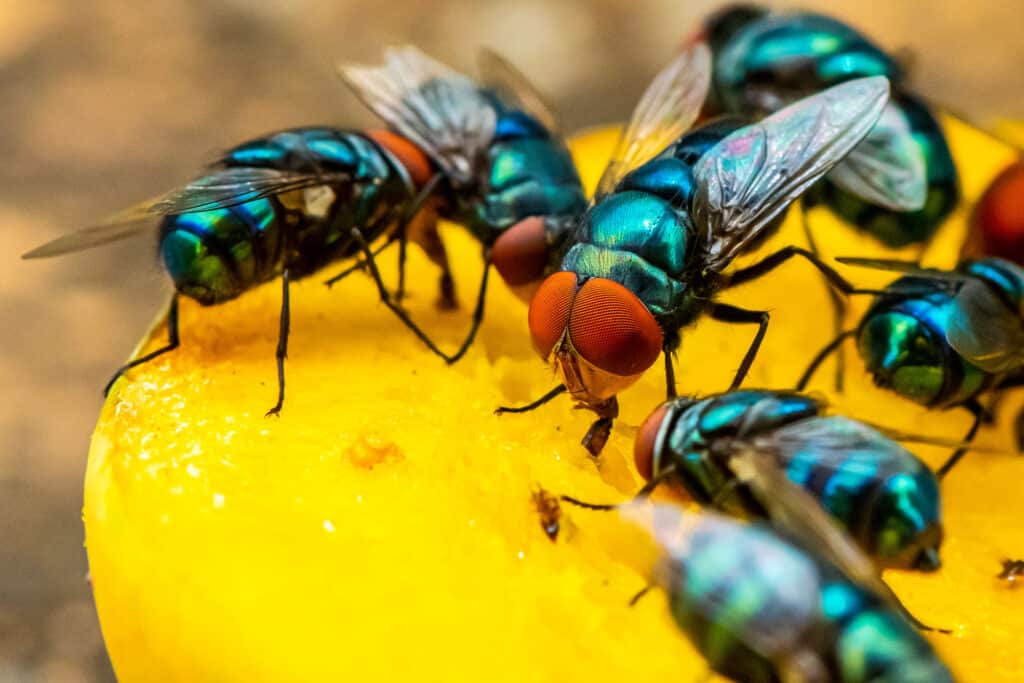
House flies land on food to eat, which can cause problems at an outdoor event.
©iStock.com/Phichaklim1
Citronella works to repel flies the same way that it does for mosquitos. Flies are also repelled by the smoke and flames, which is why citronella candles are particularly effective. These can have a limited range, however. Some people look for oil to burn in tiki torches or lamps that have citronella included. Setting these up around your yard can create a perimeter that flies and other pests avoid.
Flies include many types of insects, including mosquitos and midges. Any insect that belongs to the Diptera order is considered a true fly. When most people refer to flies, however, they are talking about house flies. They are known by the scientific name Musca domestica Linnaeus. These pests can become a problem indoors or outdoors. They are particularly attracted to food and will frequent any open buffet tables or snacks left out. Burning a citronella candle nearby can keep them from landing on your plate or dish.
#3 Gnats

Many species of gnats are very small, often just a few millimeters long.
©Tomasz Klejdysz/Shutterstock.com
Gnats also don’t like the smell of citronella. Although mosquitos are a type of gnat, most species within this suborder, Nematocera, are much smaller. Gnats can become a real nuisance, especially when they appear in groups. Keeping citronella nearby will make the environment less enticing for gnats to even show up.
To be most effective, consider using multiple sources of citronella to really maximize the smell. You can light citronella candles, have oil burning in your tiki torches, and even have potted citronella plants around your yard. The nice thing about using these is that you can add or move them as needed to take care of the pests. If you know that you’ll be having food out, add a few more citronella candles or torches to keep the gnats away.
#4 Ants
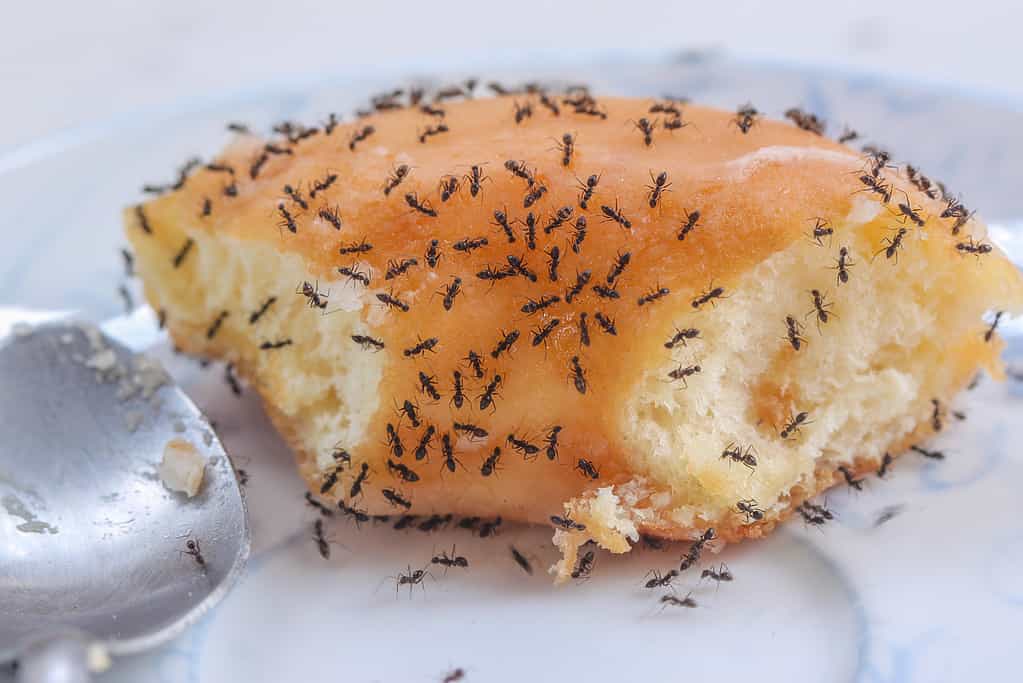
When ants find a source of food, they leave chemical trails which other ants follow to find the food.
©DARUNEE SAKULSRI/Shutterstock.com
Citronella is actually toxic to ants so using it as a repellent will have a big impact, especially if ants come into contact with the oil. You can burn candles or oil lamps to make the smell repel ants. But you can also spray ants that you see with a repellent. Not only will it kill the ants, but it also disrupts the chemical trail that they leave to help other ants follow them. When you see ants marching in a line to some food, they are relying on this chemical trail to know where to go. Once one ant finds the food, they leave a chemical trail of “breadcrumbs” for others to follow. The citronella oil demolishes this trail so future ants aren’t able to find the food.
To use citronella to repel ants, you can light a citronella candle or burn citronella oil in a lamp or torch. They don’t like the smell. However, because they are far away from the source, you might still see ants marching around your yard. If they are keeping away from your food, that might be enough of a repellant for you. But if the ants are still finding the food, use the actual oil to remove the chemical trail that they are following. You can do this by spraying diluted citronella oil on the surface. You can also douse individual ants in the oil to kill them.
#5 Biting Midges
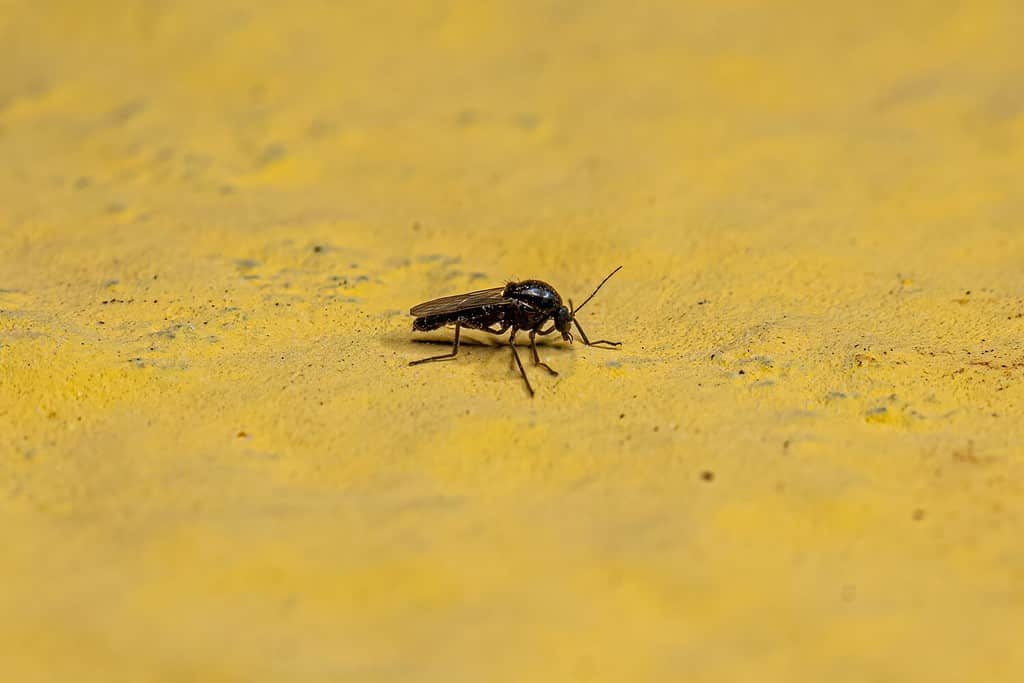
Biting midges are extremely small and hard to see, which is how they got the name no-see-ums.
©Vinicius R. Souza/Shutterstock.com
Also known as no-see-ums, these tiny insects are actually a family of flies called Ceratopogonidae. They are very, very small, often just 1/8-inch long. Because they are so small and most people don’t even notice them before they start itching at their bite, they are called no-see-ums. These biting midges can go after people and pets. Their bites can cause itching and redness, which is even more significant if you are sensitive or allergic to insect bites.
Citronella can repel these pests, which is important since you may not notice that they are even a problem until you’ve already had a few bites. No-see-ums can also bite pets and cause discomfort and itching for them. Burning citronella candles and oil in lamps or torches is a great way to keep them away. You can also look for insect repellent spray or collars that you can apply directly that have citronella oil in them.
How to Use Citronella to Repel Critters
Because of its well-known insect-repellent properties, citronella is widely available as a commercial insect repellent. You can use it in a variety of ways from things that you apply to changes in the environment. Whether you want to go natural and use the plants themselves or prefer something already prepared, you can opt for citronella when you want a natural way to repel pests.
Citronella Plants

Citronella plants are natural mosquito repellents and can be used to make citronella oil.
©iStock.com/ThamKC
If you have a green thumb, consider adding some citronella plants to your garden. This takes advantage of their bug-repellent properties while also creating a lush backdrop for your space. You can grow citronella in the ground, in a raised bed, or in a large pot. Potted citronella grows easily, doesn’t take much to maintain, and can be moved for the best impact against pests.
These plants do need a warm environment and plenty of sun. If temperatures dip below 60 to 70 degrees Fahrenheit, you probably need to bring your citronella plants indoors to keep them warm. Try to put them in a sunny place where they can soak up around 6 hours of full sun each day. You can grow them in pots to allow for repositioning as needed. Even if they need to be in one part of your yard or garden as they grow, move them to a place where they will be most effective against potential pests, such as next to a buffet table or seating area, when you host a backyard picnic or event.
Citronella Oil

Both citronella and lemongrass are used to make oil that can be used as an insect repellent.
©iStock.com/ARISA THEPBANCHORNCHAI
You can find concentrated or diluted citronella oil. Apply it directly to your skin to keep insects from getting too close. This is the same oil that is used to make other commercial products, including sprays, lotions, and even things like sunscreen. You can find it as an ingredient in insect repellents, especially those that use natural ingredients rather than synthetic chemicals.
If you want to go with citronella oil, make sure to only get it from a reputable source. The concentrations vary and you don’t want to have too strong of an oil or it might be overpowering for you. Some people have reactions or sensitivities to citronella oil, just like any other topical oil. If you are trying it for the first time, just try a small section to ensure that you don’t have a negative reaction. You should also make sure to keep it out of reach of children and pets since this oil is meant for topical application and can be dangerous if ingested. While it isn’t toxic, consuming large amounts can cause some irritation. Fortunately, the National Pesticide Information Center provides helpful information about the safety precautions you should take when using citronella oil.
If you have tiki torches or other oil-burning lamps, you can add a bit of citronella oil or look for a commercially available diluted oil with citronella already in it. Setting these up around your outdoor space is a good way to use citronella oil to keep the pests away. It also creates a nice ambiance that you can enjoy bug-free.
Candles
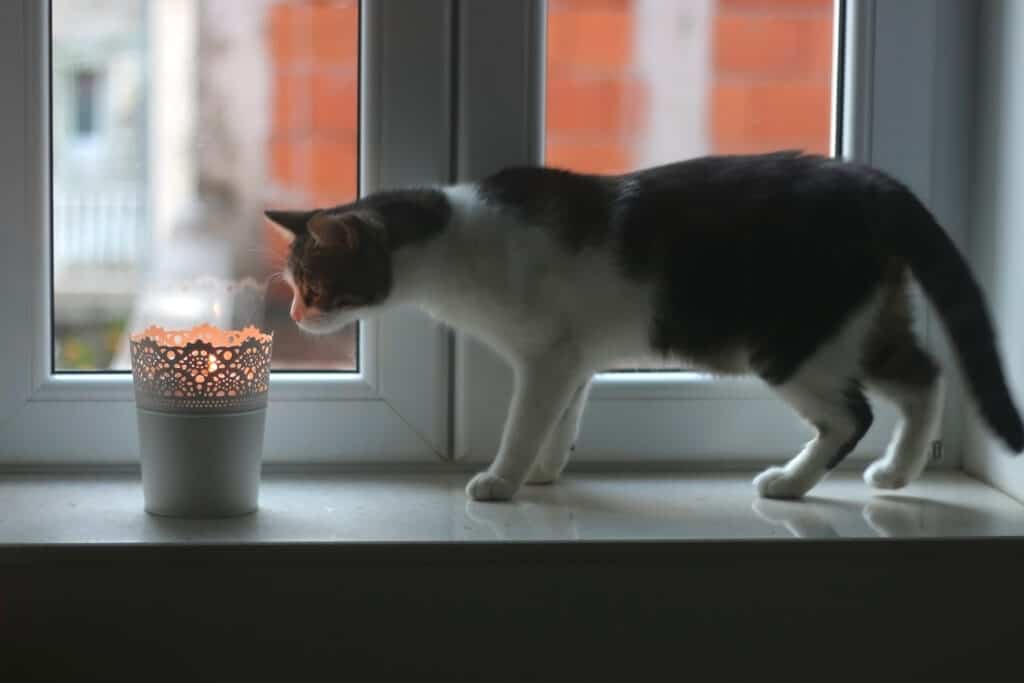
Citronella can be toxic to pets so don’t burn citronella candles indoors or where your pets might get into them.
©iStock.com/Jelena990
Citronella candles are one of the most popular ways to use citronella as an insect repellent. These candles are made with citronella oil and rely on its properties to keep insects at bay. When they aren’t lit, the candles give off a mild citronella scent which can have an impact on insects in the area. For the strongest insect-fighting power, you light the candle to boost the scent. The smoke generated by the candle, which isn’t overpowering or unusual compared to other candles, can also keep flying insects away.
Typically, one citronella candle is enough to keep insects away from a picnic table or gathering space outdoors. They won’t keep the bugs away in your entire yard but can create a nice oasis free of mosquitos, flies, and other pests. Citronella candles are a great addition to a buffet or snack table outdoors to make sure that the bugs don’t take over.
Be careful of pets when burning citronella candles. The fumes can be toxic to pets. It’s best to only burn citronella candles outside and in areas where pets will not be in direct contact.
Summary of Animals That Don’t Like Citronella
| Number | Pest |
| 1 | Mosquitos |
| 2 | House Flies |
| 3 | Gnats |
| 4 | Ants |
| 5 | Biting Midges |
The photo featured at the top of this post is © iStock.com/ThamKC
Thank you for reading! Have some feedback for us? Contact the AZ Animals editorial team.







